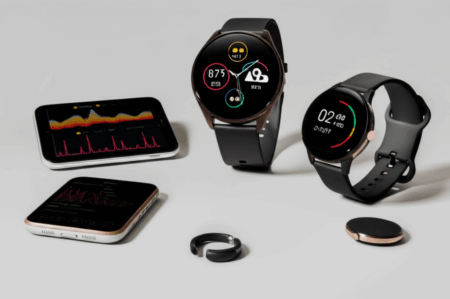The connected fitness industry, once a pandemic darling, has faced a rollercoaster of highs and lows. With gyms reopening and consumer spending habits shifting, questions arise about the long-term viability of connected fitness equipment. Is this just a temporary dip, or are we witnessing the end of the road for this once-promising market? Let’s dive into the current state of connected fitness, explore the challenges it faces, and examine the potential future trends that could reshape the industry.
What is Connected Fitness?
Connected fitness refers to fitness equipment and devices that are digitally integrated to provide a more engaging and personalized workout experience. These products often include smart bikes, treadmills, fitness mirrors, and wearables like smartwatches that sync with apps to track performance and health data, offering virtual training sessions and tailored recommendations. The rise of connected fitness has been fueled by technological advancements, increasing health consciousness, and the convenience of working out at home.
The Pandemic Boom and the Subsequent Correction
The COVID-19 pandemic triggered a massive surge in demand for at-home fitness solutions. With gyms closed and people confined to their homes, connected fitness equipment became an attractive alternative. Companies like Peloton experienced unprecedented growth as consumers invested in home workout setups.
However, as the world began to reopen, the demand for connected fitness equipment cooled off. Gyms welcomed back members, and people started reallocating their spending to other areas like travel and entertainment. This shift led to a correction in the connected fitness market, with some companies facing declining sales and restructuring.
Challenges Facing the Connected Fitness Industry
Several factors contribute to the challenges facing the connected fitness industry:
Declining Hardware Sales and Subscription Growth
Many companies are experiencing a decline in hardware sales as the initial surge in demand wanes. Simultaneously, subscription growth has slowed, and some companies have even seen a decrease in their subscriber base. For example, Peloton’s connected fitness revenue declined 21% year-over-year, and paid connected fitness subscriptions also fell.
Competition from Traditional Gyms
With gyms and fitness studios reopening, connected fitness companies face increased competition from traditional brick-and-mortar establishments. Many consumers prefer the social aspect of working out in a gym or the guidance of in-person trainers.
High Costs and Economic Uncertainty
Connected fitness equipment often comes with a hefty price tag, making it a premium purchase. In times of economic uncertainty and inflation, consumers may be more hesitant to invest in expensive home fitness equipment.
Shifting Consumer Preferences
As the initial excitement of connected fitness wears off, some consumers may find the at-home experience lacking compared to the variety and social interaction offered by traditional gyms.
Supply Chain Issues
Some companies in the connected fitness industry have faced supply chain disruptions, leading to manufacturing and delivery delays, which can negatively impact sales and customer satisfaction.
Potential Future Trends and Strategies
Despite the challenges, the connected fitness industry is not necessarily facing its end. Several emerging trends and strategies could help reshape the market and drive future growth:
Focus on Personalized and Integrated Health Solutions
The industry is shifting towards offering more personalized, integrated, and holistic health solutions. This involves leveraging data from wearables, apps, and smart equipment to provide tailored recommendations and real-time feedback.
Leveraging AI and VR Technologies
Integrating artificial intelligence (AI) and virtual reality (VR) technologies can enhance the workout experience and provide precise workout plans. AI-powered virtual trainers can use biometric data to provide real-time verbal cues, ensuring correct form and workout efficiency.
Embracing Open Ecosystems
Forging vertical integration, as the sector evolves, the future of connected fitness could look less like Apple and more like Android.
Gaming-Inspired Fitness Options
Incorporating gaming elements into workouts can make exercise more engaging and fun. Gaming-inspired options are moving the industry beyond competition-based or instructor-led options alone.
Omnichannel Approach
Combining digital offerings with brick-and-mortar experiences can create a more comprehensive fitness solution. Brick-and-mortar operators can scale up their DTC (Direct To Customer) efforts, while connected fitness brands can explore partnerships with physical gyms and studios.
Integration with Wearable Technology
Connected fitness devices can integrate with wearable technology, such as smartwatches and fitness trackers, to provide a more seamless and personalized fitness experience. This integration allows machines to track more detailed performance metrics, such as heart rate variability, calorie expenditure, and recovery time, providing users with comprehensive insights into their workouts.
Subscription-Based Fitness Models
With the increasing adoption of connected fitness, subscription-based models are expected to become the norm. Users will pay monthly for exclusive AI-powered workouts, virtual coaching, and new digital fitness content.
Eco-Friendly Gym Equipment
As environmental consciousness continues to rise, the fitness industry is starting to align with eco-friendly practices.
Success Stories and Innovative Companies
While some companies have struggled, others are finding success by adapting to the changing market. Here are a few examples:
- Peloton: Despite facing challenges, Peloton remains a leader in connected fitness. The company is exploring dynamic pricing, expanding into new fitness areas like rowing and strength training, and focusing on cost-cutting measures to improve profitability.
- Echelon: As a rival to Peloton, Echelon has expanded its reach by selling through retailers like DICK’S Sporting Goods, Walmart, and Costco, as well as Amazon. The company has also invested in technology, launching a fitness mirror, rower, and smart treadmill.
- Speediance: This brand is pioneering the connected fitness space with AI-powered workouts, digital resistance training, and compact, space-saving designs.
- Tonal: Tonal offers a unique approach with its wall-mounted digital weight machine that uses AI to track progress and adjust resistance.
- VAHA: This Germany-based company produces a high-end fitness mirror for bodyweight exercise, yoga, and more. A content subscription secures on-demand and live classes, 1:1 personal training, and personalized form-tracking workouts.
The Future of Home Fitness
The at-home fitness equipment market is projected to continue growing, with forecasts estimating a market size of $21.4 billion by 2035. This growth is driven by factors such as increasing health awareness, rising obesity rates, and the desire for convenient fitness options.
Smart home gym equipment, in particular, is expected to see significant growth, driven by the integration of advanced technologies like AI, VR, and connected fitness apps.
The Bottom Line
While the connected fitness industry has faced challenges and a market correction, it is not necessarily on its last leg. The industry is evolving and adapting to changing consumer preferences and market conditions. By focusing on personalized experiences, leveraging technology, and embracing new business models, connected fitness companies can continue to play a significant role in the future of fitness.
The key will be to differentiate themselves in meaningful ways, whether through innovative equipment, high-quality content, or a focus on holistic health and wellness. The companies that can successfully navigate these challenges and capitalize on emerging trends will be the ones that thrive in the long run.







